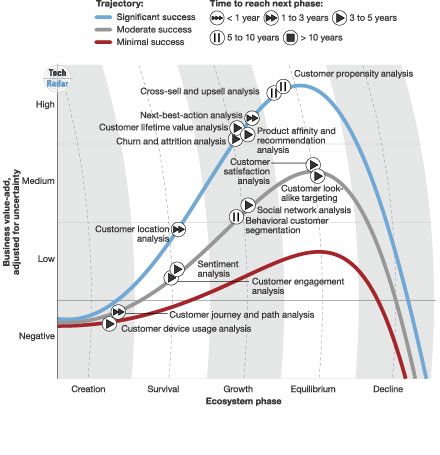Here’s an experience many consumers have these days. This one happened to one of us (Rod): My credit card company began offering electronic coupons from retailers that I could download to my card. Then I would automatically receive the discount from that retailer when I made a purchase. I’m not a regular patron of fast food places, but I added a fast food coupon to my card in case I happened to be pressed for time and needed a quick meal. With that, I signed out of my account and forgot about it.
Several weeks later, while I was driving, my cell phone suddenly “dinged,” indicating an incoming notification. The notification alerted me that I hadn’t used my coupon yet and that the fast food vendor had a restaurant nearby. Initially I was shocked because I had always read about this technology as an example of what retailers would be able to do in the future through combining the geolocation abilities of phones with other information they had acquired from their customers. My next response was, “Cool, I’m finally being rewarded positively for surrendering all of my data to my credit card company.” I was a little worried that my credit card company seemed to know where I was, but overall I was pleased that the company seemed to use prescriptive analytics to serve me, the customer, better.
BENEFITS OF PRESCRIPTIVE ANALYTICS
In the first segment of this business intelligence and analytics series, Rod introduced the concept of analytics, defined analytics, and described a continuum of analytics. Then he referenced the Gartner value chain model of analytics to help frame further discussion, and he identified some of the benefits of predictive analytics and established a roadmap for transitioning on the continuum to predictive analytics. (See Rod’s first article, “From Business Intelligence to Predictive Analytics,” in the January 2015 issue of Strategic Finance.) Now let’s discuss prescriptive analytics.
In 2013, research company Gartner referred to prescriptive analytics as “the final frontier of analytic capabilities.” Prescriptive analytics attempts to influence or recommend an action to be taken within a given time constraint in order to realize a desired outcome. Prescriptive analytics incorporates unstructured data (such as videos, images, sounds, and texts) with the tools utilized in previous analysis (such as structured data, business rules, and customer surveys) to enable business analysts to identify the actions needed to drive predicted outcomes and to gain insight into the potential impact of each alternative action.
Prescriptive analytics also utilizes advanced automated data-driven decision-making techniques (e.g., optimization and simulation models) to evaluate the alternatives and deliver these recommended decisions in a timely manner. In “TechRadar™: Customer Analytics Methods, Q1 2014,” Forrester Research cites a good example that subtly differentiates the transition from predictive to prescriptive:
Predictive: Create a propensity model to predict the propensity of a customer to buy the same product as a second-time purchaser.
Prescriptive: Utilize the propensity scores to target second-time buyers the minute they walk into the store or visit the company website.
For example, my (Brad’s) company uses mobile diagnostics to promote cross-selling and up-selling opportunities. Our mobile technicians who are working on an engine can now remotely notify a customer: “You are currently due for an oil change and fuel filter. Would you like me to go ahead and take care of those while we repair your engine?”
The most commonly cited benefits of prescriptive analytics include enhanced insight into both personalization opportunities (specific) and consumer habits and patterns (general), clearer vision as to how to maintain current equilibrium (such as how to maintain the current business activity/profitability), and elevated awareness of social media impact.
HOW TO TRANSITION TO PRESCRIPTIVE ANALYTICS
Most studies and commentary on prescriptive analytics indicate that the roadmap should maintain the existing analytical tools in use and supplement them with additional tools that incorporate social media, unstructured data, and advanced automated decision methods. Forrester also suggests that the life-cycle stage of the company impacts decision making as to the appropriate tools to use (see Figure 1).
THE FUTURE OF ANALYTICS
Our earlier example of the electronic fast food coupon shows that analysis of device usage is a prescriptive tool in the early stages of development. It has the potential to provide valuable context around behavior and other customer dynamics. Firms that need deeper insights into why a customer acted in a certain manner rather than just the action he or she took are likely candidates for prescriptive analytics tools. At the end of the day, there may be some instances and circumstances where firms will maximize business value by remaining in their current analytics phase. Nevertheless, awareness of prescriptive tools and their potential to drive customer engagement and increase revenues is still important information to have.
While prescriptive analytics was once a futuristic concept, more mainstream applications are quickly appearing with the ability to influence the customer purchasing decision and improve corporate profitability. Unfortunately for the fast food company and my (Rod’s) credit card company, they didn’t know that I had just finished eating lunch. Consequently, I didn’t take them up on their offer. Nevertheless, I was impressed with their leading-edge use of prescriptive analytics and look forward to taking them up on another offer sometime soon.

June 2015




